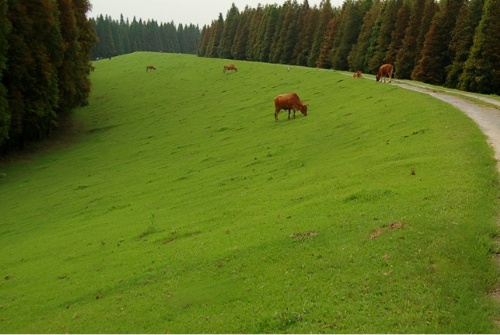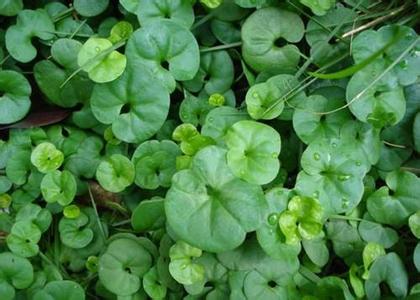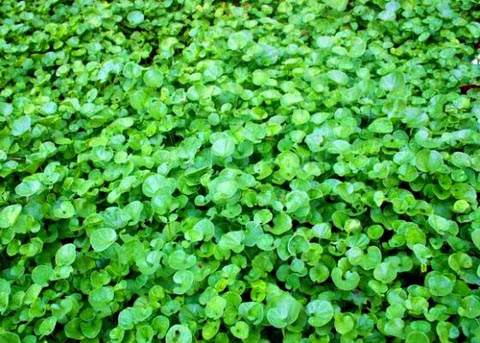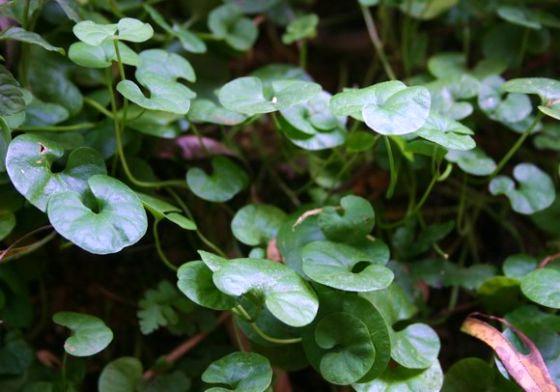Maintenance of Dichondra Grass Lawn how to raise Dichondra grass so as not to get sick
In the process of conservation of horseshoe grass, we must pay attention to weeding, fertilizing, irrigating and draining it in time to avoid it from being infected with pests and diseases, thus losing its original effect.

Cultivation and Maintenance of Dichondra chinensis Turf
Planting: Dichondra can be used in two ways: seeding propagation and vegetative propagation, and its stolon is often used for reproduction. Because of the fast growth speed of the post-road gold creeping, it is generally used to spread the turf with a length of 8 to 10 cm and a thickness of 3 cm. The turf is spread on the planting ground with 20 to 25 pieces of turf per square meter. After paving, water should be poured thoroughly. When there is no accumulated water on the grass surface, pat it flat with wooden boards to make the turf closely connected with the soil. The soil in the gap between the grass blocks should be loose and slightly higher than the grass surface, which is conducive to rapid sheeting.
Weeding: Due to the influence of many factors and the large base of weeds on the site, there are generally a certain number of weeds in the Dichondra chinensis lawn. Especially, weeds in newly built lawns are of many kinds and large quantities, which will seriously affect the quality of lawns if they are not controlled in time. Weeds must be removed 2 to 3 times before the post-road gold has fully covered the ground, which is the key to planting good post-road gold. It is worth noting that herbicides are best used in the seedling stage of weeds.

Fertilization: Because Dichondra creeps on the ground and leaves are relatively broad, fertilization is difficult. If fertilization techniques are not strictly controlled, serious seedling burning will occur. In general, if you use a fertilizer with high solubility, it is best to dissolve it first and then spray it with a sprayer; if you use a fertilizer that does not dissolve immediately, you should pour a lot of water after fertilization, wash the fertilizer falling on the leaves into the soil with water, and make it dissolve as soon as possible, so as to reduce the degree of burns; or first fertilize, then sweep the fertilizer under the leaves with a broom, and then combine watering. At the same time, avoid high temperature fertilization.
Watering: horseshoe gold likes shade. In order to ensure that horseshoe gold can grow luxuriantly from June to September and its leaf color is normal, it must be properly supplemented with water during dry periods. Each watering penetration depth of 10 cm is appropriate, watering should be carried out in the evening, as far as possible by automatic sprinkler irrigation.
Piercing holes: In September, when the established turf is formed into blocks, stolons are dense or soil is hardened, holes should be drilled on the turf by drilling machines or garden forks to improve soil ventilation, cut off part of the creeping rhizomes of Dichondra, and promote new roots. General turf stolon dense and slightly hardened soil, hole depth of 2.5 cm to 5 cm, if the soil is severely hardened, hole depth of not less than 8 cm.

Pest Control of Dichondra chinensis
1. Rust: The main symptom is reddish brown powdery sores or stripes on stems and leaves, which turn dark brown later. In general, spores of rust begin to spread in April, appearing first on leaves, expanding to the whole plant in summer, and can cause the lawn to wither and die in large areas when it is serious. The control method is firstly to pay attention to avoiding nitrogen fertilizer in summer, and secondly to control it with chemical methods. 20% triadimefon emulsifiable concentrate, 30 to 40 ml per mu, or 40% carbendazim colloidal suspension, 75 to 100 ml per mu.
2. Lawn moth: This insect is harmful to lawn. It eats roots and stems, interrupting the water supply of plants, yellowing stems and leaves until death. Control methods can be used to kill black light, can also be used sweet and sour liquid trap, but also available 40% Lesben 1000 times liquid spray.
3. The locust chews leaves and tender stems. When it occurs seriously, all the stems and leaves are eaten, and the damage is most serious from June to August. Control methods: spray 0.5 kg trichlorfon or dichlorvos with 500 kg water per mu, or concentrate on killing in the morning.
4. The cutworm eats young stems and leaves exclusively, which makes the lawn unable to grow normally. In serious cases, it can cause the plant to die in pieces. Control method with 50% Diazon emulsifiable solution, 50 to 100 ml per mu, or 25% carbaryl wettable powder, dosage of 200 to 250 g per mu.

Generally speaking, too humid soil and air are easy to let calla infected with pests and diseases, of course, too dry is not allowed, so we in the process of planting it, the first thing to grasp is reasonable watering reasonable fertilization and weeding a "degree" word. This ensures its high quality.
Related
- Wuhan Hospital Iron Tree Blooming Result Was Instantly Frightened by the Gardener Master
- Which variety of camellia is the most fragrant and best? Which one do you like best?
- What is the small blue coat, the breeding methods and matters needing attention of the succulent plant
- Dormancy time and maintenance management of succulent plants during dormancy
- Minas succulent how to raise, Minas succulent plant pictures
- What are the varieties of winter succulent plants
- How to raise succulent plants in twelve rolls? let's take a look at some experience of breeding twelve rolls.
- Attention should be paid to water control for succulent plants during dormant period (winter and summer)
- Watering experience of twelve rolls of succulent plants
- Techniques for fertilizing succulent plants. An article will let you know how to fertilize succulent plants.



